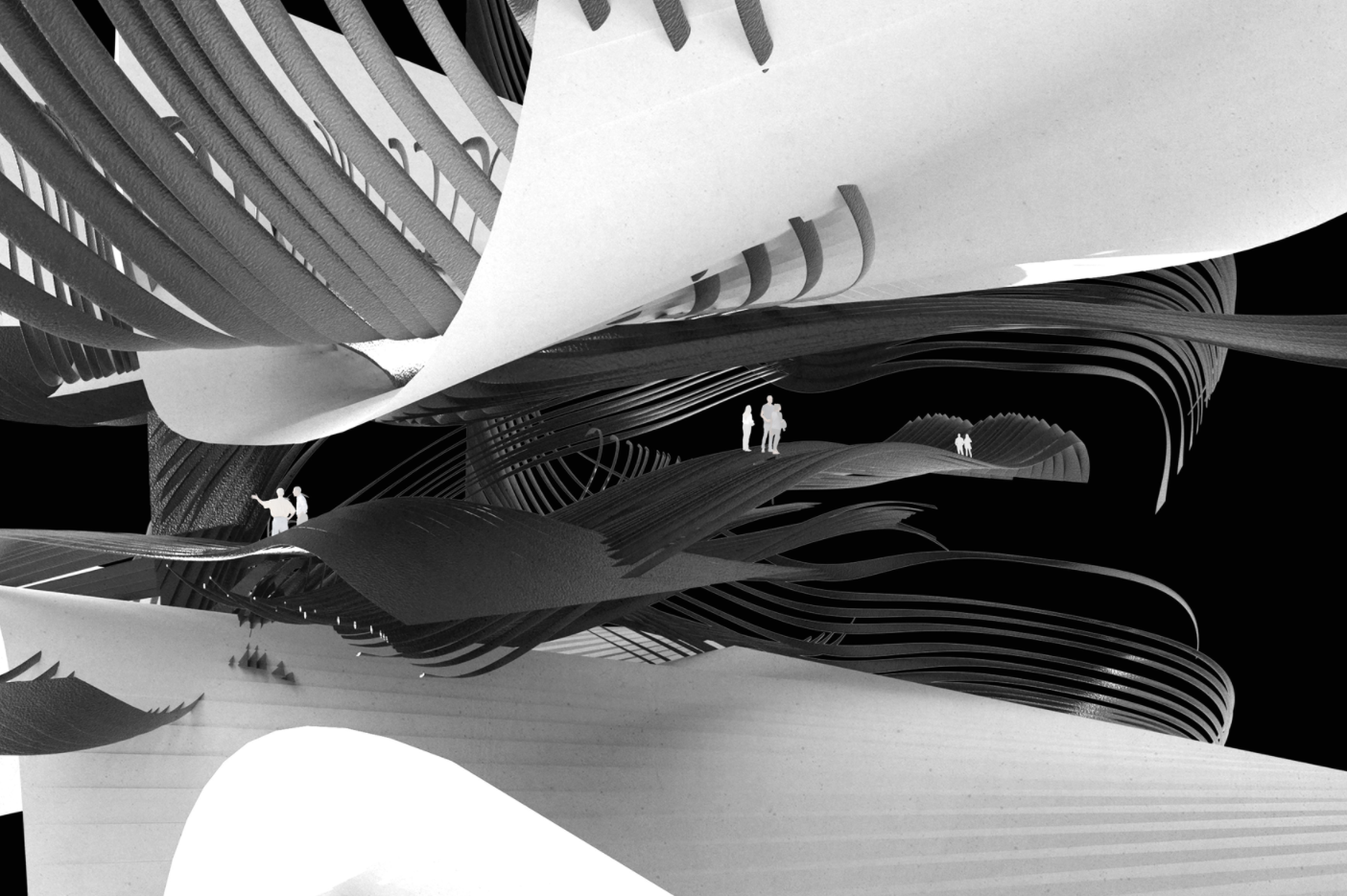CLIMATE ACTION CENTERS
Project created with partner Run Lin | Nominated for ISU 2020 Hansen Prize | ARCH 301 Prof. Liza Walling








View complete portfolio here
As designers we must acknowledge that design has a political role in society. Buildings are not neutral. Climate change is happening.
Located in the Fourmile Creek watershed in Des Moines, IA the Climate Action Centers are temporary structures curated towards each site’s individual experience of climate change. The structures are imagined as a tool to implement the Green New Deal, or a similar proposal, dedicated to creating green jobs to help the economy in the U.S. It provides resources like water quality tools, emergency rescue equipment, soil analysis, land surveying. The buildings are easily constructed and destructed, a modular process, of providing meeting spaces, equipment and storage within to help combat the issues of flooding and watershed management in Iowa. The structures are built using prefabricated panels and locally sourced materials. Windows framing views of different parts of the site along with an open floor plan to encourage people to walk outside and experience the empty site. Our small structures form a bottom-up approach to helping and providing sources for people in sites of climate crisis. This temporary governmental building structure advocates for on-site specific spaces to implement policies to engage the local community and obtain important feedback from communities within the new governmental facilities.








These spaces are imagined as a tool to implement the Green New Deal, or a similar proposal, dedicated to creating green jobs to help the economy in the U.S. The Green New Deal is a policy proposed by Democrat Representative Alexandria Ocasio-Cortez and Senator Edward J. Markey. The Green New Deal congressional resolution is to conquer climate change through economic measures in the U.S. This policy is introduced on the premise of demolishing the use of fossil fuels and outfitting the U.S. infrastructure with energy efficient measures to attempt to stop greenhouse gas emissions. It strives to alter and change the very way the landscape is controlled. It is our role as designers to build projects that implement these policies with the best practices possible instead of focusing on aesthetics and hyper realistic renderings displaying only what we want to see.
As appealing as the Green New Deal may seem, it has become a political proposal in the 2020 U.S. Presidential candidate Sen. Bernie Sanders has taken a role in the Climate Crisis advocacy adapting it into his political platform. Not only is the Green New Deal lacking any actual laws or regulations to enact, it strongly appeals to the middle class by means of providing large statements without evidence or action. However some sort of policy will become enacted to motivate the county into the channel of greener jobs. Our small structures form a bottom-up approach to helping and providing sources for people in sites of climate crisis.
In the case of Fourmile Creek in Pleasant Hill, Iowa it is a suburban neighborhood with a high rate of housing displacement due to flood zone boundaries. It is on the intersecting point of the Des Moines, Iowa voting precincts, distinguishing the space between political boundaries and the division of farm and city. The amount of resources in the site is minimal. Along with the lack of habitation, the non-human aspect is prevalent through the analysis of cut down trees, anonymous waste dumping and concrete barricades to the area-- a lack of care towards the landscape. There has been an increase of community research and planning dedicated towards revitalizing the Fourmile Creek.
---
ARCH 301 PROCESS WORK:
CARE BETWEEN THE EARTH & SKY
Research in preparation for depaving workshop with CommonstudioTextile explorations : with paper, thread, fabric, wire, & light





3D Model explorations in Rhino : playing with scale, abstracting & figures





